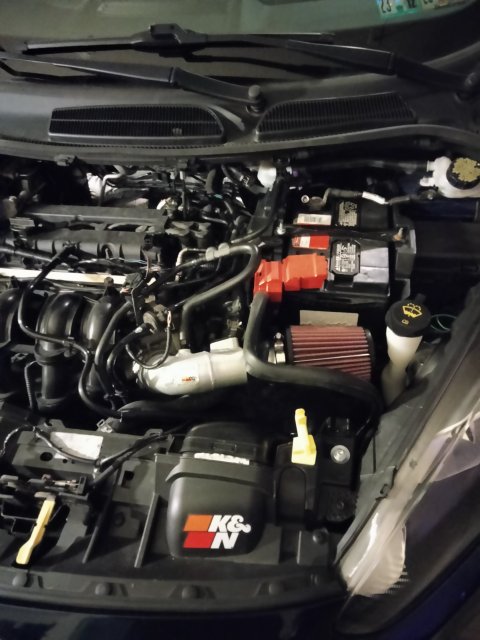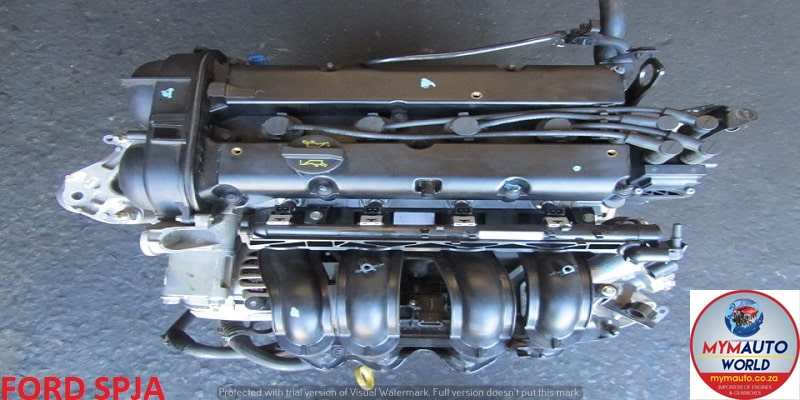How a Well-Maintained Ford Fiesta Engine Improves Vehicle Longevity
How a Well-Maintained Ford Fiesta Engine Improves Vehicle Longevity
Blog Article
Unlocking the Power of Engines: A Comprehensive Guide to Efficiency and Performance
Recognizing the elaborate mechanics of engines is crucial for both efficiency enthusiasts and daily chauffeurs. The solutions may redefine our technique to engine efficiency and effectiveness in methods that are both informing and crucial.
Comprehending Engine Fundamentals
What makes up the basic technicians of an engine? At its core, an engine is an equipment designed to convert fuel right into mechanical power with a collection of controlled explosions or burning procedures. The main components consist of the cyndrical tube, piston, crankshaft, camshaft, and shutoffs. The cylinder serves as the chamber where burning takes place, while the piston relocates within the cylinder to convert the energy from burning right into straight motion (ford fiesta engine).
The crankshaft then transforms this straight activity into rotational power, which ultimately powers the vehicle. The camshaft regulates the opening and closing of the shutoffs, controling the intake of air and fuel and the expulsion of exhaust gases. In addition, the engine depends on a thoroughly adjusted fuel-air blend, ignition system, and cooling system to make sure ideal efficiency and effectiveness.
Comprehending engine essentials likewise involves acknowledging the significance of engine cycles, such as the four-stroke cycle, that includes intake, compression, power, and exhaust strokes. Each phase is essential in ensuring the engine works efficiently and effectively. Proficiency of these fundamental auto mechanics prepares for discovering much more complex engine dynamics and efficiency metrics, essential for maximizing both power outcome and performance.
Secret Efficiency Metrics
Secret efficiency metrics are essential for reviewing an engine's efficiency and power result, supplying valuable understandings for both suppliers and consumers. These metrics serve as criteria for engine performance, enabling notified decisions in style, getting, and production.
One of the main metrics is horse power, which measures the engine's capability to do job over time. Torque, gauged in pound-feet, is an additional crucial metric that indicates the engine's rotational force, straight affecting acceleration and towing capacity. Fuel effectiveness, normally gauged in miles per gallon (MPG) or litres per 100 kilometers (L/100km), assesses exactly how efficiently the engine transforms gas into movement, affecting functional prices and ecological considerations.
Additionally, thermal efficiency actions just how well an engine transforms fuel energy into useful job, disclosing understandings into energy losses primarily through heat. Emission levels, consisting of carbon dioxide and NOx, are additionally critical, reflecting the engine's ecological influence and conformity with regulatory standards.

Tuning Methods for Performance
Tuning techniques play a considerable function in boosting engine efficiency by optimizing efficiency metrics determined in earlier conversations (ford fiesta engine). Numerous techniques exist to adjust an engine, each adding to boosted gas economic situation and reduced emissions
One effective technique is adjusting the air-fuel ratio, ensuring the engine operates within the optimal combustion regime. A leaner mix can improve see here fuel efficiency, however it has to be stabilized to avoid misfires or engine knock. Furthermore, reprogramming the engine monitoring system can recalibrate criteria such as ignition timing, which further improves effectiveness while keeping power output.
One more essential method includes customizing the consumption and exhaust systems. Updating to high-performance air filters and exhaust headers can lower back pressure, helping with much better air flow. This permits the engine to take a breath more openly, causing enhanced burning effectiveness.
Moreover, the implementation of advanced tuning tools, like dyno screening, provides specific information that allows targeted adjustments. On a regular basis checking these performance metrics ensures that adjusting efforts produce the desired performance outcomes. Jointly, these techniques not just reinforce engine efficiency but additionally add to lasting sustainability in engine operations.
Upkeep for Optimal Performance
Routine engine upkeep is vital for achieving optimum performance and long life. A well-maintained engine not just runs efficiently but additionally lessens the danger of pricey repair services and breakdowns. Key parts needing regular interest include oil, filters, belts, and spark plugs.
Changing the engine oil at advised intervals is crucial, as oil lubricates relocating components and prevents overheating. In a similar way, replacing oil and air filters guarantees that pollutants do not harm engine feature. Overlooking these elements can cause lowered efficiency and potential engine damage.
Furthermore, checking and changing worn belts and hose pipes is essential to stop sudden failings. Timing belts, specifically, should be replaced according to the maker's timetable to avoid devastating engine damage.
Ignition system must additionally be examined and changed as essential, since they play a vital duty in ignition and gas efficiency.
Future Trends in Engine Technology
Welcoming innovations in innovation, the future of engine design check this site out is positioned to reinvent performance and performance across numerous applications. Hybrid and fully electrical powertrains are ending up being significantly traditional, offering lowered hop over to here exhausts and enhanced gas effectiveness.
Furthermore, innovations in products science are resulting in lighter, stronger parts that enhance engine efficiency while lowering energy usage. Advanced production methods, such as 3D printing, permit the creation of intricate geometries that improve air flow and thermal monitoring, therefore maximizing combustion processes.
In addition, the integration of fabricated intelligence and artificial intelligence is established to change engine diagnostics and performance adjusting. These technologies can evaluate substantial amounts of information in real time, making it possible for predictive upkeep and customized performance improvements.
Final Thought
In conclusion, unlocking the power of engines requires an extensive understanding of their auto mechanics and performance metrics. Executing effective tuning techniques and sticking to normal upkeep methods considerably improve engine capabilities.
In addition, the engine counts on a meticulously adjusted fuel-air blend, ignition system, and cooling system to guarantee optimal efficiency and performance.
Comprehending engine fundamentals also entails identifying the relevance of engine cycles, such as the four-stroke cycle, which includes intake, power, compression, and exhaust strokes. Mastery of these fundamental mechanics lays the groundwork for discovering extra complicated engine characteristics and performance metrics, crucial for enhancing both power output and effectiveness.

Embracing advancements in technology, the future of engine design is poised to revolutionize efficiency and performance throughout numerous applications.
Report this page